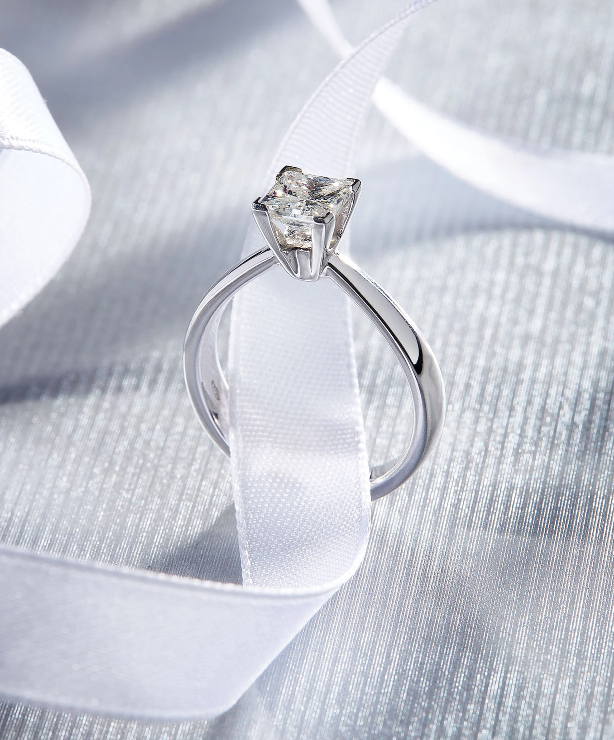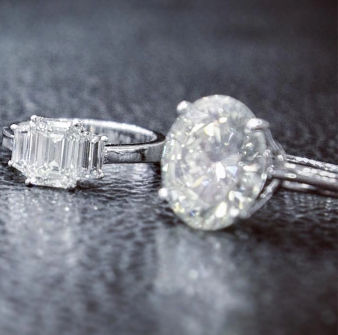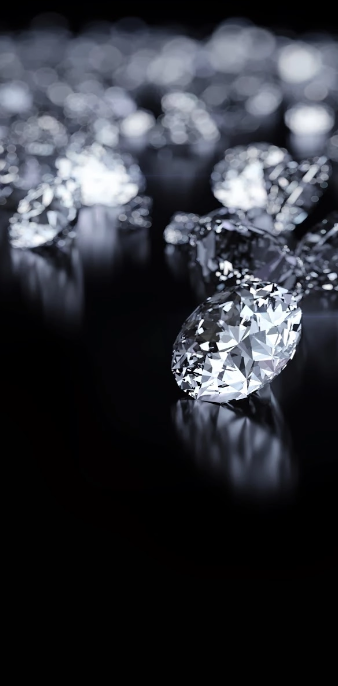ENGAGEMENT RINGS
A PROPOSAL, A PROMISE, A LIFETIME BOND
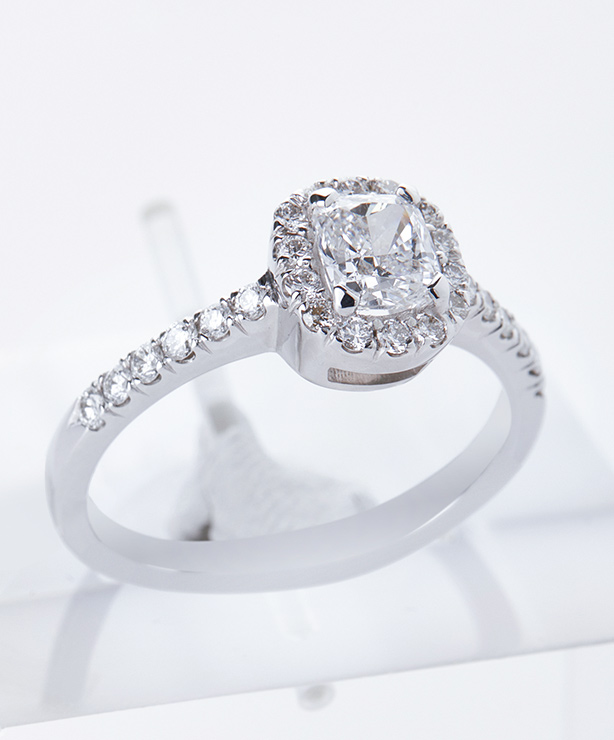
ABOUT
DIAMONDS
The engagement ring is one of the most desired and timeless jewel for a woman. Diamonds that are typically found in solitaire rings are brilliant. However, a variety of other diamond cuts, such as princess cut (square), emerald cut (rectangular), oval, marquise or pear cut (tear), offer an unusual shape for an engagement ring.

ABOUT
DIAMONDS
The engagement ring is one of the most desired and timeless jewel for a woman. Diamonds that are typically found in solitaire rings are brilliant. However, a variety of other diamond cuts, such as princess cut (square), emerald cut (rectangular), oval, marquise or pear cut (tear), offer an unusual shape for an engagement ring.
DIAMOND CUTS

Brilliant

Oval

Marquise

Pear

Heart

Trillion

Princess

Radiant

Emerald

Square
Emerald

Cusion
Baguette
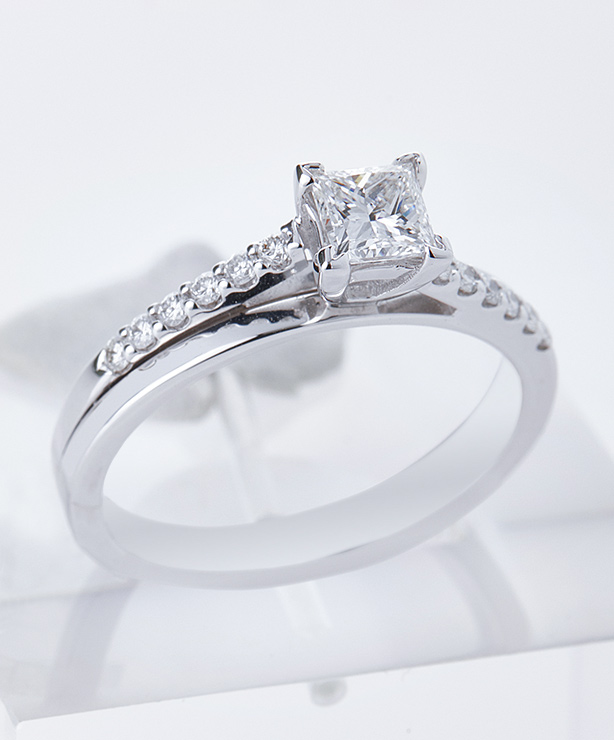
The final form of a diamond has many special features. From these four are the ones that a buyer should understand best: Cut, Carat weight, Color and Clarity.
THE 4C's
of DIAMONDS
C ut is perhaps the most important characteristic of a diamond. If the diamond has not the correct proportions, it will never be able to show its glow. Cut determines the degree that a diamond interacts with light to create desirable visual effects, such as: brightness, iridescence and scintillation.
C arat weight is the characteristic that has a significant effect on a diamond. The heavier and bigger a diamond, the rarer it is.
A carat is the unit of measurement for the physical weight of diamonds and other precious gems. One carat weights 200 milligrams (0.2 grams) and is subdivided into 100 points.
C olor is something that characterizes the nature of the diamond. The majority of diamonds are slightly yellow to brown. Rare diamonds are completely colorless.
A diamond that is chemically pure and structurally perfect has no hue and thus a higher value. The degree of colorlessness is defined by comparing a stone under controlled lighting and precise viewing conditions to master stones of established color value.

Clarity refers to transparency, which is the absence of inclusions and surface blemishes of a diamond.
Diamond is a product of high temperatures and pressures that occurred millions of years ago in the depths of the earth. It is therefore natural for a diamond to contain various impurities in crystalline form, demonstrating its naturalness. Diamonds that do not contain impurities are extremely rare, raising their price to unapproachable levels.

A perfectly pure diamond does not exist. But the closer it comes to purity, the better its clarity.
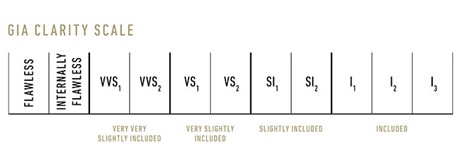

The final form of a diamond has many special features. From these four are the ones that a buyer should understand best: Cut, Carat weight, Color and Clarity.
THE 4C's
of DIAMONDS
C ut is perhaps the most important characteristic of a diamond. If the diamond has not the correct proportions, it will never be able to show its glow. Cut determines the degree that a diamond interacts with light to create desirable visual effects, such as: brightness, iridescence and scintillation.
C arat weight is the characteristic that has a significant effect on a diamond. The heavier and bigger a diamond, the rarer it is.
A carat is the unit of measurement for the physical weight of diamonds and other precious gems. One carat weights 200 milligrams (0.2 grams) and is subdivided into 100 points.
C olor is something that characterizes the nature of the diamond. The majority of diamonds are slightly yellow to brown. Rare diamonds are completely colorless.
A diamond that is chemically pure and structurally perfect has no hue and thus a higher value. The degree of colorlessness is defined by comparing a stone under controlled lighting and precise viewing conditions to master stones of established color value.
Clarity refers to transparency, which is the absence of inclusions and surface blemishes of a diamond.
Diamond is a product of high temperatures and pressures that occurred millions of years ago in the depths of the earth. It is therefore natural for a diamond to contain various impurities in crystalline form, demonstrating its naturalness. Diamonds that do not contain impurities are extremely rare, raising their price to unapproachable levels.
A perfectly pure diamond does not exist. But the closer it comes to purity, the better its clarity

